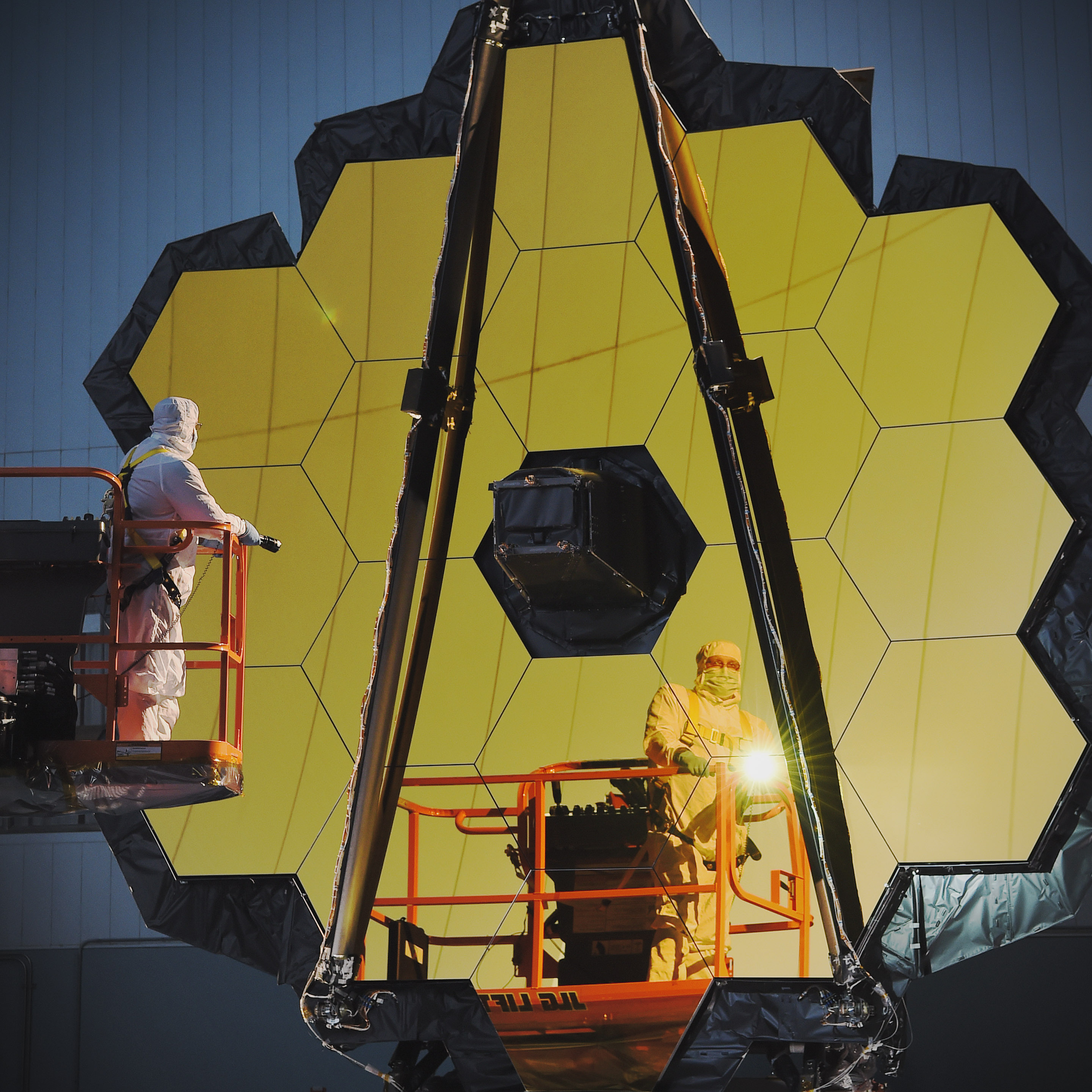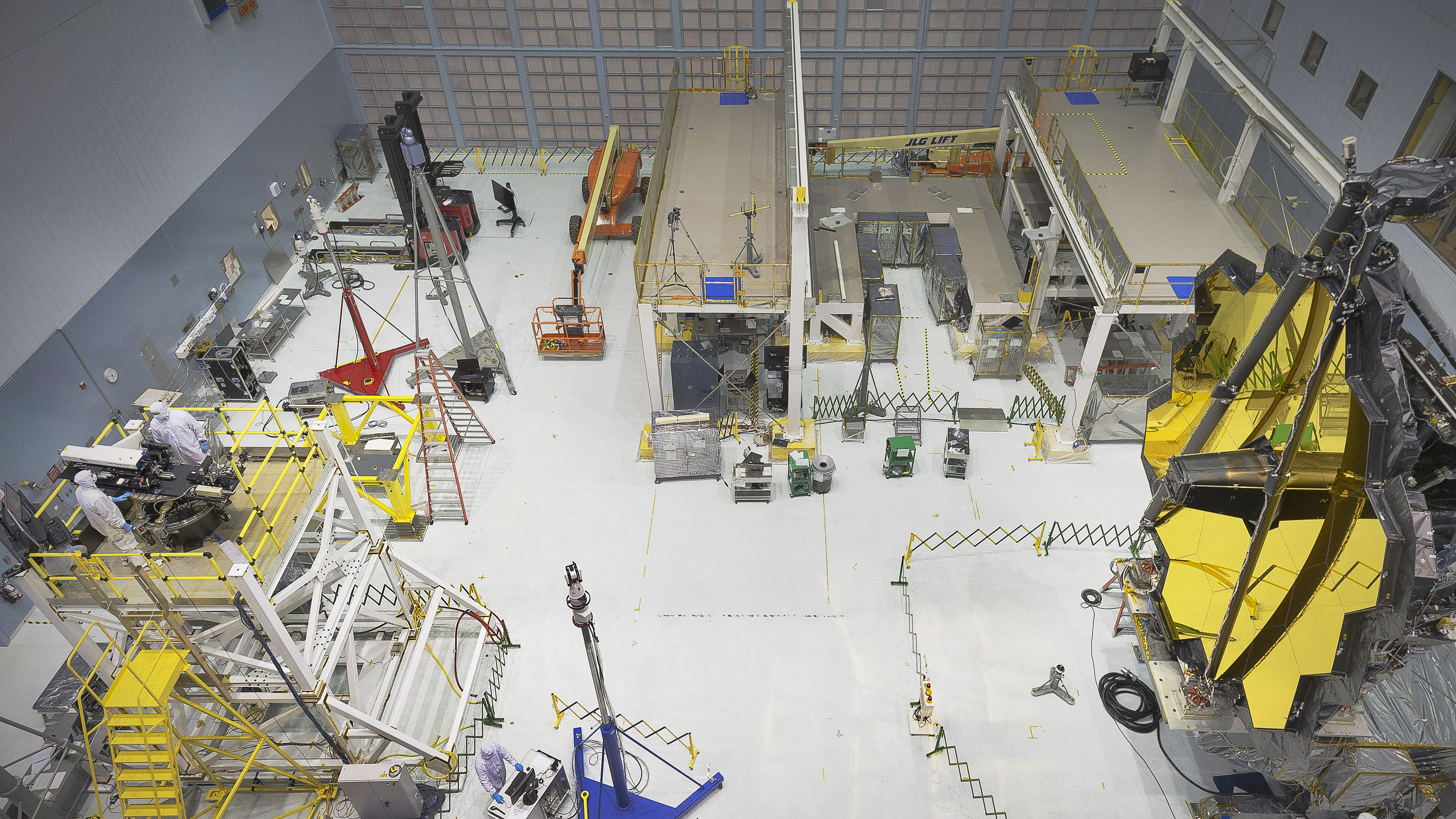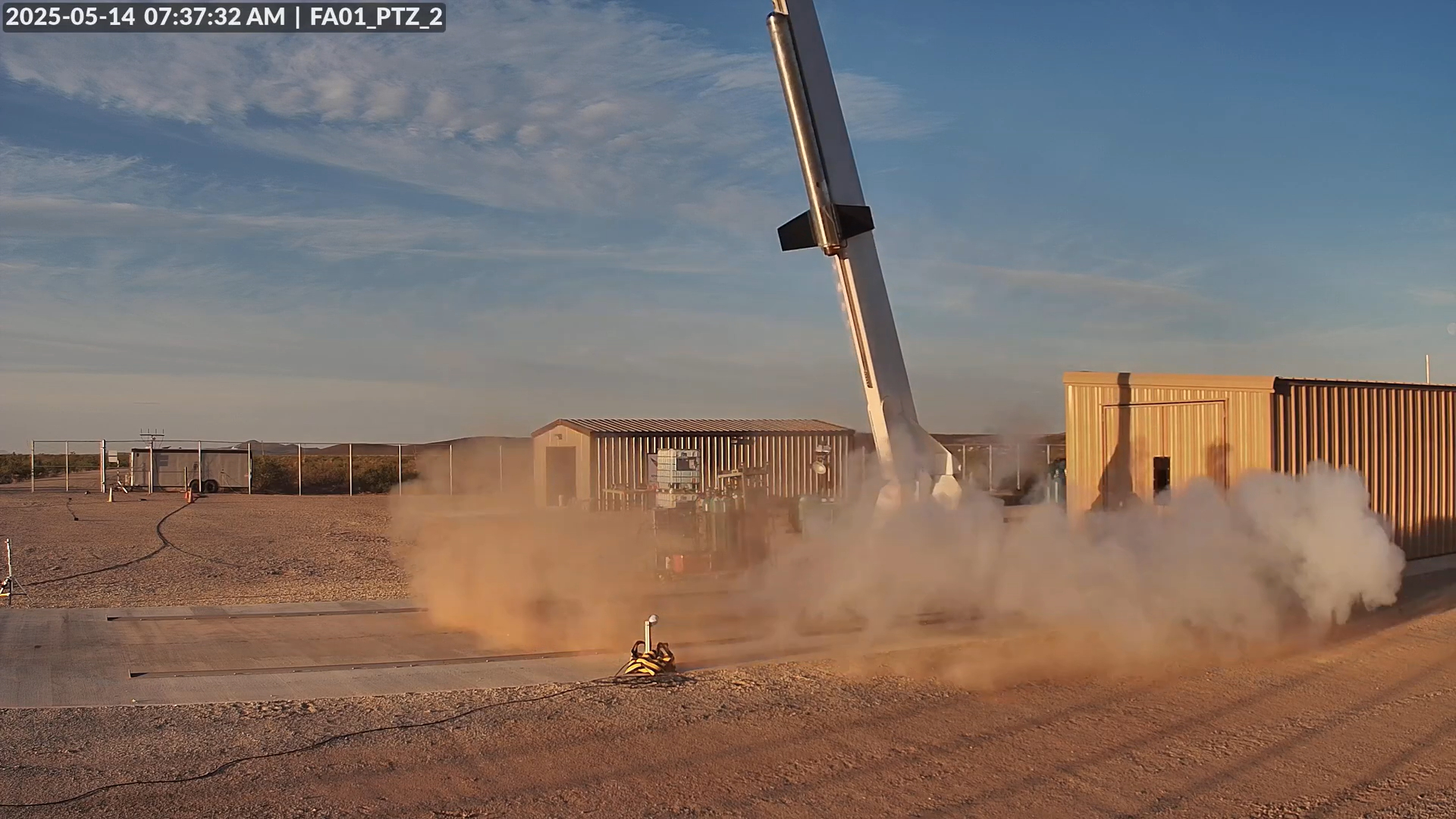World's Largest Space Telescope Graduates Goddard Testing, Heads to Texas

The James Webb Space Telescope is on the road again. After passing its final test at NASA's Goddard Space Flight Center in Greenbelt, Maryland, the megatelescope is ready for the next stop on its trip to space: further testing at Johnson Space Center in Houston.
The final mirrors for the giant space observatory arrived at Goddard in 2014, and the telescope's construction was finally completed in November 2016, after more than 20 years of construction. Since then, the instrument has endured a battery of testing to ensure that it can withstand the rigors of launch and deep space. Webb is slated to launch in 2018, when it will become the world's largest telescope to fly to space. (NASA highlighted some of Webb's testing in a new video.)
The final test at Goddard checked the curvature of the telescope's mirrors to see whether they had become warped during the year of intensive testing. To test this, engineers precisely measured the interference patterns of lasers reflected off of the mirrors, and then compared the measurements to those taken before environmental testing began last year, NASA officials said in a statement. The telescope's mirrors came out unchanged by the many stresses of simulated spaceflight. [Shaken & Chilled: Tests Give James Webb Telescope a Taste of Deep Space (Exclusive Interview)]


"The Webb telescope is about to embark on its next step in reaching the stars as it has successfully completed its integration and testing at Goddard," Bill Ochs, NASA's Webb telescope project manager, said in a statement. "It has taken a tremendous team of talented individuals to get to this point from all across NASA, our industry, and international partners and academia.
"It is also a sad time, as we say goodbye to the Webb telescope at Goddard, but [we] are excited to begin cryogenic testing at Johnson," he added.
Once it arrives at Johnson, the telescope will be put to the ultimate test: The entire scope's optics will be tested in a vacuum in the space center's massive Chamber A and cooled to 11 degrees above absolute zero (minus 440 degrees Fahrenheit, or minus 262 degrees Celsius). Afterward, the telescope will continue on to Northrop Grumman Aerospace Systems in Redondo Beach, California, for its final testing and assembly. It will then go to French Guiana for launch.
Webb will probe the cosmos from a spot in space called Lagrange Point 2, located directly behind Earth from the sun's perspective, where the telescope can use one shield to protect itself from both the sun's and Earth's thermal emissions. From there, Webb will gather infrared views of the universe's first galaxies and of planets around distant stars; the use of infrared light will allow Webb to peer through interstellar dust for a better view.
Get the Space.com Newsletter
Breaking space news, the latest updates on rocket launches, skywatching events and more!
NASA has positioned Webb as the Hubble Space Telescope's successor; the new instrument has seven times the collecting area of the famed Hubble instrument, and is chilled cold enough to collect infrared light that Hubble cannot. That will allow Webb to see even farther into space's outer reaches.
Email Sarah Lewin at slewin@space.com or follow her @SarahExplains. Follow us @Spacedotcom, Facebook and Google+. Original article on Space.com.
Join our Space Forums to keep talking space on the latest missions, night sky and more! And if you have a news tip, correction or comment, let us know at: community@space.com.

Sarah Lewin started writing for Space.com in June of 2015 as a Staff Writer and became Associate Editor in 2019 . Her work has been featured by Scientific American, IEEE Spectrum, Quanta Magazine, Wired, The Scientist, Science Friday and WGBH's Inside NOVA. Sarah has an MA from NYU's Science, Health and Environmental Reporting Program and an AB in mathematics from Brown University. When not writing, reading or thinking about space, Sarah enjoys musical theatre and mathematical papercraft. She is currently Assistant News Editor at Scientific American. You can follow her on Twitter @SarahExplains.
